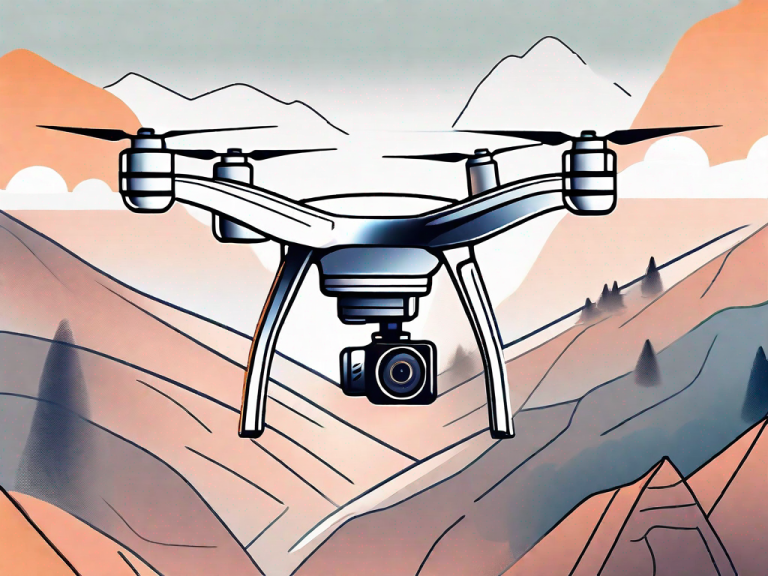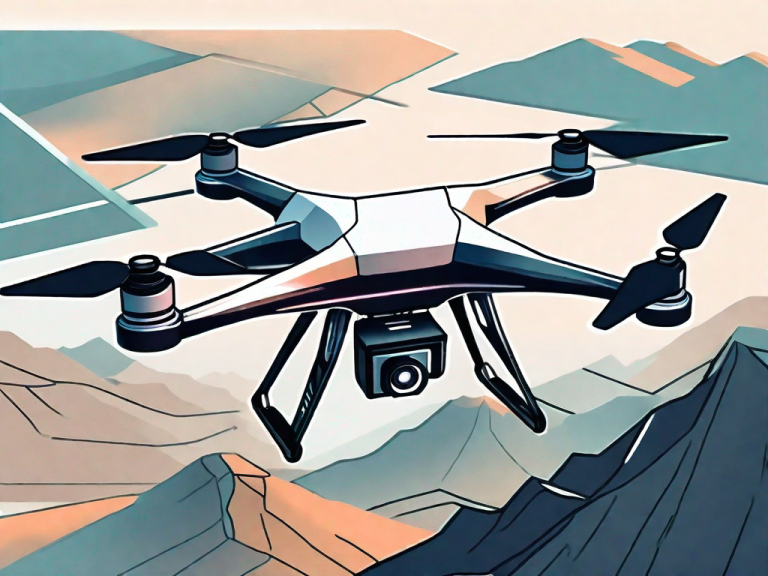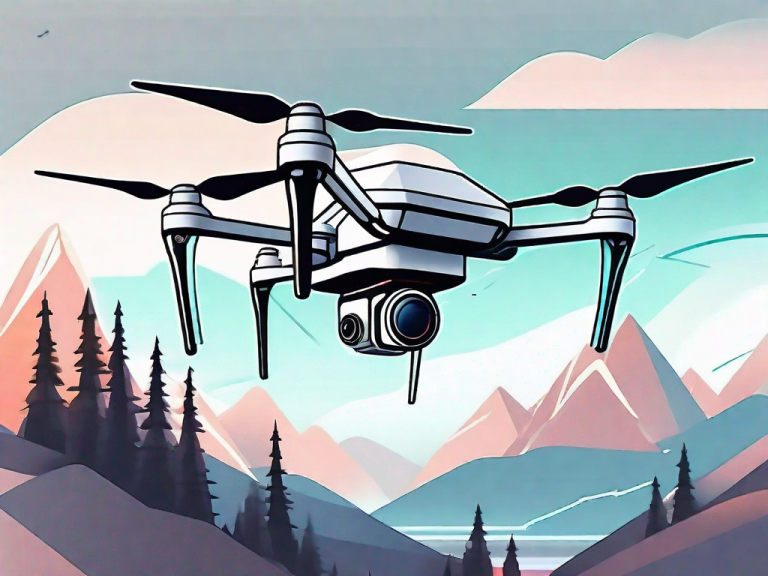If you’re a photography enthusiast or someone who simply appreciates the beauty of mountains and hills, you may have wondered if there are specific techniques for capturing stunning aerial shots of these majestic landscapes. Fortunately, the answer is a resounding yes! In this article, we will delve into the secrets of capturing breathtaking aerial photographs of mountains and hills.
Spectacular Aerial Photography: Unveiling the Secrets of Capturing Mountains and Hills
When it comes to aerial photography, mountains and hills offer a unique canvas for capturing awe-inspiring shots. From dramatic peaks to rolling landscapes, these natural wonders have the power to captivate viewers. But how do you ensure that you capture the true essence and beauty of these landscapes from above? Let’s dive into the secrets of spectacular aerial photography of mountains and hills.
One key secret to capturing stunning aerial shots of mountains and hills is to carefully plan your flight path. By studying the topography and understanding the direction of light, you can strategically position your aircraft to capture the most breathtaking angles. This planning process involves researching the area, scouting potential locations, and considering the time of day for optimal lighting conditions.
In addition to planning, it is crucial to have the right equipment for aerial photography. A high-quality camera with a wide-angle lens is essential for capturing the vastness and grandeur of mountains and hills. Investing in a stabilizing system, such as a gimbal or drone, can also help ensure steady shots and smooth movements. Furthermore, using filters, such as polarizers or neutral density filters, can enhance the colors and reduce glare, resulting in more vibrant and captivating images.
The Magic of Aerial Shots: Unlocking the Beauty of Mountains and Hills
Aerial shots have the ability to transform ordinary scenes into extraordinary works of art. The unique perspective gained from shooting from above allows you to showcase the grandeur and scale of mountains and hills in a way that is impossible from the ground. The magic lies in capturing the awe-inspiring beauty of these landscapes and translating that into a powerful visual experience for the viewer. Let’s explore how you can unlock this magic.
One of the key advantages of aerial shots is the ability to capture the intricate details of mountains and hills. From above, you can capture the intricate patterns formed by the winding rivers, the jagged edges of the cliffs, and the lush greenery that blankets the slopes. These details add depth and texture to your photographs, creating a more immersive experience for the viewer.
Additionally, aerial shots allow you to capture the ever-changing weather conditions that often surround mountains and hills. From the ethereal mist that shrouds the peaks to the dramatic play of light and shadow as clouds pass overhead, these dynamic elements add drama and intrigue to your photographs. By capturing these fleeting moments, you can create truly captivating images that evoke a sense of wonder and awe.
Getting Started: Essential Equipment for Aerial Photography of Mountains and Hills
Before embarking on your mountain and hill aerial photography adventure, it’s crucial to have the right equipment. The key component of your gear arsenal will be a drone. Drones have revolutionized aerial photography, allowing photographers to access perspectives previously unattainable. Look for a drone with a high-quality camera, reliable flight controls, and a decent battery life to ensure you can capture the shots you desire. Additionally, make sure to invest in spare batteries, memory cards, and a sturdy carrying case to protect your equipment during your adventures.
Another important piece of equipment to consider for aerial photography of mountains and hills is a gimbal. A gimbal is a stabilizing device that helps to keep your camera steady and level during flight. This is especially crucial when capturing images or videos in windy conditions or during fast movements. A gimbal can greatly improve the quality of your aerial shots by reducing unwanted camera shake and ensuring smooth footage. When choosing a gimbal, look for one that is compatible with your drone and offers features such as 3-axis stabilization for optimal results.
Choosing the Right Drone for Capturing Stunning Mountain and Hill Shots
The market is flooded with a plethora of drones, each with its own set of features and capabilities. When it comes to capturing aerial shots of mountains and hills, there are specific factors to consider. Look for a drone with excellent stability and maneuverability, as the windy conditions commonly found in these environments can pose challenges. Additionally, opt for a drone with a high-resolution camera capable of capturing sharp and detailed images. Doing so will ensure that you can showcase the beauty of mountains and hills in all their glory.
Furthermore, it is important to consider the battery life of the drone. When capturing shots of mountains and hills, you may need to fly the drone for an extended period of time to get the perfect shot. Look for a drone with a long battery life or the ability to easily swap out batteries to ensure you don’t miss any opportunities. Additionally, consider the range and signal strength of the drone’s remote control. Mountains and hills can create obstacles that may interfere with the signal, so it is crucial to choose a drone that can maintain a strong connection even in challenging terrain.
Mastering Flight Control: Tips for Maneuvering Drones in Mountainous Terrain
Once you have your drone, it’s essential to master flight control, particularly when navigating mountainous terrain. Practice flying your drone in open areas away from obstacles to develop your piloting skills. Familiarize yourself with the various flight modes and features your drone offers, such as obstacle avoidance and GPS-assisted flight. These features will be invaluable when maneuvering your drone amidst the rugged and varied terrain found in mountains and hills.
When flying in mountainous terrain, it’s important to pay attention to the weather conditions. Strong winds and unpredictable gusts can make it challenging to maintain control of your drone. Check the weather forecast before each flight and avoid flying in high winds or during inclement weather. Additionally, be aware of any potential air currents or turbulence caused by the surrounding landscape.
Another crucial aspect of flying in mountainous terrain is understanding the limitations of your drone’s battery life. The increased altitude and varying wind conditions can affect your drone’s flight time. Plan your flights accordingly and always keep track of your battery levels to ensure a safe return to your starting point. Consider carrying spare batteries or a portable charger to extend your flight time if needed.
Safety First: Precautions to Consider When Flying Drones in Mountainous Areas
While flying a drone in mountains and hills can be exhilarating, it’s crucial to prioritize safety. Always check local regulations and obtain the necessary permits or permissions before flying in specific areas. Be mindful of weather conditions, as strong winds can destabilize your drone and interfere with your shots. Keep a safe distance from wildlife and other potential hazards. A well-prepared and safety-conscious approach will not only protect the environment but also ensure an enjoyable and incident-free aerial photography experience.
One important precaution to consider when flying drones in mountainous areas is to be aware of your surroundings. Mountains can have unpredictable terrain and sudden changes in elevation, so it’s essential to carefully plan your flight path and avoid flying near steep cliffs or rocky outcrops. Additionally, be cautious of any potential obstacles such as trees or power lines that may obstruct your drone’s flight path.
Another crucial safety measure is to always maintain visual contact with your drone. In mountainous areas, it’s easy for a drone to get lost or become disoriented due to the vastness of the landscape. By keeping your drone within your line of sight, you can quickly react to any potential issues or emergencies that may arise during the flight. If you lose sight of your drone, it’s important to have a backup plan in place, such as using a GPS tracking device or having a spotter assist you in locating it.
Planning Your Aerial Shoot: Finding the Perfect Location for Mountain and Hill Shots
When it comes to capturing extraordinary aerial shots, location is key. Research and scout potential locations in advance to identify areas that offer stunning natural features such as imposing peaks, winding rivers, or lush valleys. Look for vantage points that provide a balanced and visually appealing composition. Consider visiting during different times of the day or year to capture unique lighting conditions and seasonal variations. Proper planning will enable you to maximize your chances of capturing awe-inspiring aerial shots of mountains and hills.
One important factor to consider when planning your aerial shoot is the weather conditions. Check the weather forecast for the location you are interested in to ensure that you have clear skies and optimal visibility. Cloudy or foggy conditions can obstruct the view and make it difficult to capture the desired shots. Additionally, be aware of any potential weather hazards such as strong winds or storms that could pose a risk to your equipment or safety.
Another aspect to take into account is the legal and regulatory requirements for aerial photography in the chosen location. Familiarize yourself with the local laws and regulations regarding drone usage and obtain any necessary permits or permissions. Some areas may have restrictions on flying drones near protected wildlife or sensitive areas. By adhering to the rules and regulations, you can ensure a safe and legal aerial shoot while respecting the environment and local communities.
Timing is Everything: How to Capture the Best Lighting Conditions for Aerial Shots
Lighting plays a crucial role in any type of photography, and aerial shots of mountains and hills are no exception. The best lighting conditions for capturing these landscapes are typically during the golden hours—shortly after sunrise or before sunset—when the soft, warm light enhances the natural beauty of the terrain. Additionally, keep an eye on weather forecasts as dramatic clouds or mist can add a touch of mystique and drama to your images. Patience and refining your timing skills will allow you to capture truly remarkable aerial shots.
Framing the Shot: Compositional Techniques for Capturing Majestic Mountains and Hills
Composition is a fundamental element in photography, and it plays a significant role in capturing compelling aerial shots of mountains and hills. When framing your shot, consider incorporating leading lines, such as rivers or trails, to guide the viewer’s eye through the image. Utilize the rule of thirds to create a balanced composition and emphasize the grandeur of the landscape. Experiment with different angles and perspectives to add depth and visual interest to your shots. By applying these compositional techniques, you can create visually striking aerial photographs that showcase the majesty of mountains and hills.
Capturing Scale and Perspective: Tricks for Highlighting the Immensity of Mountains and Hills from Above
One of the unique aspects of aerial photography is the ability to capture the immense scale of mountains and hills. To truly convey this sense of grandeur, it’s essential to include elements that provide a point of reference. This could be a tree, a building, or a nearby hiking trail. By including these elements in your composition, you create a sense of scale and allow viewers to appreciate the true size and majesty of the landscape from an aerial perspective.
Overcoming Challenges: Dealing with Wind, Fog, and Other Environmental Factors during Aerial Photography
Aerial photography of mountains and hills can present several challenges, including unpredictable weather conditions such as wind and fog. These factors can impact both the flight stability of your drone and the clarity of your images. It’s crucial to constantly monitor the weather conditions and exercise caution when flying in adverse conditions. Adjust your flight altitude and composition to minimize the effects of wind or creatively incorporate fog into your shots to add an ethereal atmosphere. By adapting to these challenges, you can turn them into opportunities to capture unique and captivating images.
Editing Tips and Tricks: Enhancing the Beauty of Mountain and Hill Shots in Post-Production
Post-processing is an essential part of the aerial photography workflow. While modern drone cameras capture stunning images, a bit of editing can elevate your shots to the next level. Use editing software to adjust exposure, contrast, and color balance to bring out the natural beauty of mountains and hills further. Be mindful not to over-process your images, as retaining a natural and realistic look will best showcase the breathtaking landscapes you captured from above.
Sharing Your Masterpieces: Showcasing Your Aerial Mountain and Hill Photography on Social Media Platforms
Once you have edited your aerial shots of mountains and hills to perfection, it’s time to share your masterpieces with the world. Social media platforms such as Instagram, Facebook, and Flickr offer excellent avenues to showcase your work to a wide audience. Curate a visually appealing gallery and utilize relevant hashtags to reach photography enthusiasts and outdoor enthusiasts alike. Engage with the community, exchange valuable feedback, and inspire others with your aerial mountain and hill photography.
Inspiring Others: How Aerial Photography of Mountains and Hills Can Ignite a Passion for Nature
Lastly, never underestimate the power of your aerial shots of mountains and hills to ignite a passion for nature in others. Your photographs have the potential to inspire people to appreciate and protect these incredible landscapes. Share the stories behind your images, educate your audience about the importance of conservation, and foster a love for the natural world. Through your aerial photography, you can make a positive impact by kindling a deep connection between people and the awe-inspiring beauty of mountains and hills.
In conclusion, capturing stunning aerial shots of mountains and hills is undoubtedly an art form that requires skill, patience, and a creative approach. By following the techniques and tips outlined in this article, you can elevate your aerial photography to new heights and showcase the full magnificence of these natural wonders. So grab your drone, explore breathtaking locations, and capture the magic that unfolds when mountains and hills meet the sky.









